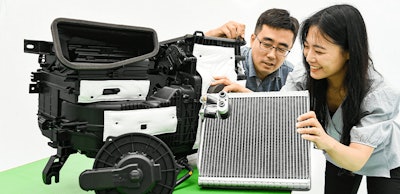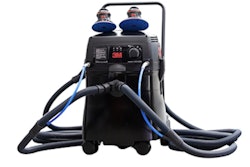
Toronto, Ontario — Hyundai Motor Group announced three new technologies to improve the air quality in its vehicles.
Recognizing the growing concern about air quality, the company unveiled three new air-conditioning technologies—After-Blow, Multi-Air Mode and Fine Dust Indicator. The technologies will be introduced initially on select models in Korea and will eventually expand to upcoming Hyundai, Kia and Genesis vehicles worldwide.
The After-Blow dries the condensate on the evaporator and suppresses mold growth in the air-conditioning system, which can cause an odor during hot weather. After the engine is turned off and the condensate on the evaporator drains naturally for about 30 minutes, After-Blow activates for 10 minutes to dry the evaporator and any condensate leftover in the air passage. The air-conditioning system automatically allows influx of outside air during this time to prevent humidity from building up.
The Multi-Air Mode uses multiple vents for air conditioning and heating to create a more pleasant indoor environment with gentle wind. When this mode is activated, the air is dispersed to the newly added multi-air slots in the driver and passenger seats in addition to the normal air vents. The overall wind volume remains the same, but the dispersion of wind reduces direct air contact and softens the air. This mode can be switched on and off based on the preference of the driver.
The Fine Dust Indicator measures the air inside the vehicle in real time and delivers digitized information, allowing the driver to better manage the air quality. The indicator displays the concentration and pollution level of ultrafine particles inside the vehicle using integer numbers and colors for better visibility to the user. If the level of ultrafine particles exceeds a set amount while the function is active, the air-cleaning mode will run to purify the air in the vehicle.
For more information about how these technologies work, click here.





















